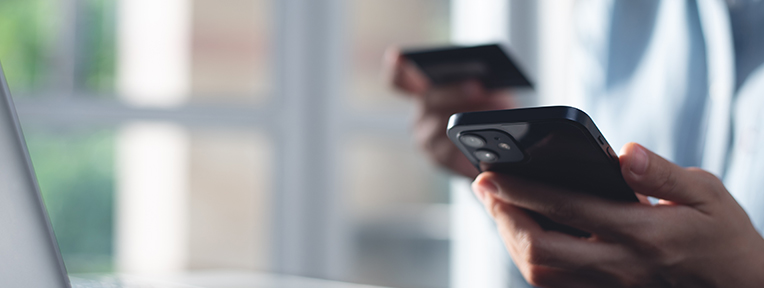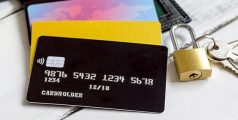
ATM Card Blocked? Here’s How You Can Unblock It Quickly
Posted on Wednesday, March 12th, 2025 | By IndusInd Bank
Ever found yourself at an ATM, ready to withdraw some cash, only to see a message pop up saying, “Your card is blocked”? That sinking feeling is all too familiar — and it can throw off your entire day.
ATM cards are such a regular part of our lives that we barely think about them, until they suddenly stop working. Whether you’re at a store, shopping online, or just trying to check your balance, a blocked card feels like an unnecessary roadblock.
But here’s the silver lining — in most cases, you can fix this with just a few steps. This guide will take you through why ATM cards get blocked, how you can unblock yours, and some smart tips to avoid this hassle in the future.
What is an ATM Card?
Let’s start with the basics — what exactly is an ATM card, and why does it matter so much? An ATM card is your personal key to accessing your bank account anytime, anywhere. Linked directly to your savings account or current account, it lets you withdraw cash, check your balance, or even change your PIN at ATMs.
These days, most ATM cards also double up as debit cards, which means you can swipe them at stores, shop online, and even pay bills directly from your account. Some cards even work abroad if you’ve enabled international usage.
In short, your ATM card is like your wallet in plastic form — small, simple, but super important.
What Does ATM Card Blocking Mean?
So, what exactly does ‘blocking’ mean when it comes to ATM cards?
In simple terms, it’s your bank hitting the pause button on your card. Whether you’re trying to withdraw money, swipe at a store, or shop online, a blocked card won’t work.
Most of the time, blocking is a safety feature. If your bank suspects something fishy, or if you accidentally enter the wrong PIN too many times, they might block your card to protect your account.
The important thing to remember? A blocked card doesn’t always mean you did something wrong — sometimes, it’s just your bank looking out for you.
Also Read: Know How to Reset Your ATM PIN
Types of ATM Card Blocks
Understanding the type of block on your card can help you figure out how to fix it faster. Here are the two main types:
| Type of Block | Common Reasons | Can It Be Unblocked? |
| Temporary Block | Multiple wrong PIN attempts, suspicious transactions | Yes, usually after identity verification |
| Permanent Block | Reported lost/stolen card | No, you’ll need a new card |
| Inactivity Block | Card not used for a long time | Often, after identity confirmation |
| Security Block | Fraud alerts, KYC issues, data breaches | Case-specific — might need a branch visit |
Reasons Why ATM Cards Get Blocked
Wondering why your ATM card got blocked in the first place? There are actually quite a few reasons why banks put these blocks in place—most of them are meant to protect your money. Here are some of the common ones:
- Entering the wrong PIN too many times (most banks allow 3-5 tries).
- Sudden, unusual transactions that make your bank nervous.
- Using your card internationally without informing your bank.
- Reporting your card lost or stolen — banks immediately lock it to prevent misuse.
- Long-term inactivity — some banks block cards that haven’t been used for over a year.
- Proactive security measures — if your bank suspects a potential data breach.
- You manually block your card using your bank’s app (a handy feature, by the way).
How to Unblock ATM Card? Step-by-Step Process
In many cases, you can get your ATM card unblocked without too much hassle. The exact steps might vary a bit depending on your banks. But here’s how it generally goes:
Step 1: Figure Out What Happened
Start by checking your SMS or email alerts — your bank might’ve already explained why your card is blocked. If not, log into your mobile banking app or call customer care.
Step 2: Contact Customer Care or Use Digital Banking
Depending on the reason, you might be able to unblock your card directly through your bank’s app or net banking portal. If not, a quick call to customer service should do the trick.
Step 3: Prove It’s Really You
Be ready to answer some security questions or verify your identity. If it’s a KYC-related block, you might need to submit updated documents.
Step 4: Wait for the confirmation
Once your card is unblocked, you’ll usually get an SMS or email confirmation. If your card can’t be unblocked, your bank will guide you on getting a replacement.
Step 5: Test Your Card
Before you celebrate, try using your card — maybe at an ATM or for a small online purchase — just to make sure everything’s working.
Also Read: Cash Withdrawal Using UPI from ATM
When Should You Avoid Unblocking Your ATM Card?
While unblocking your ATM card is often straightforward, there are some situations where it’s safer to leave the card blocked or request a replacement. Here are a few examples:
| Scenario | What Should You Do? |
| If your card was lost or stolen | If there’s even a small chance that someone else might have access to your card, it’s better to ask for a new card rather than unblocking the old one. |
| If you spot suspicious transactions | If your bank blocked your card because of unusual activity, think twice before requesting an unblock. Instead, check your account statement and speak to customer care to rule out fraud. |
| If your card details were exposed online | In cases where your card information may have been compromised due to phishing, data breaches, or scams, getting a new card is the safest option. |
| If you’re unsure why the card was blocked | Don’t rush to unblock your card without understanding the reason. It’s always better to be cautious when your money is involved. |
In short, if there’s any risk to your funds, it’s smarter to go for a replacement card instead of reactivating the existing one.
Alternate Payment Options When Your ATM Card is Blocked
A blocked ATM card isn’t the end of the world. You’ve got plenty of other ways to keep your payments going, including:
- Use your bank-linked UPI app to pay bills, shop online, or transfer money. You can also use the new IndusInd Bank Mobile Banking App for seamless UPI payments.
- Log into net banking to transfer funds, pay bills, or check your balance.
- Mobile wallets are a quick fix for small purchases.
- Got a credit card? Use it for big or urgent expenses.
- Need cash? You can always visit your nearest bank branch and withdraw directly from the counter.
Tips to Avoid Your ATM Card from Getting Blocked
While knowing how to unblock your ATM card is important, it’s even better if you can avoid the hassle altogether. Here are some simple tips to keep your card safe and active:
- Be extra careful with your PIN — if you’re unsure, reset it instead of guessing.
- Set up transaction alerts so you’re the first to know if something’s off.
- Keep your phone number and email updated with your bank.
- Use your card regularly to avoid inactivity blocks.
- Avoid sketchy websites — no one wants their card details stolen.
- Misplaced your card? Use your bank’s app to temporarily block it until you find it.
- If your card’s lost, don’t wait — report it immediately.
- Only enable international transactions when you actually need them.
Wrapping Up!
A blocked ATM card can feel like an inconvenience, but it’s rarely a dead end. Once you understand why it happened and follow the right steps, you can get back to spending, saving, and managing your money smoothly. The trick is to stay alert and make the most of your bank’s digital tools. And of course, having a backup payment option or two never hurts. That way, you’re always ready — even if your ATM card decides to take an unscheduled break.



 Offers
Offers Rates
Rates Debit Card Related
Debit Card Related Credit Card Related
Credit Card Related Manage Mandate(s)
Manage Mandate(s) Get Mini Statement
Get Mini Statement
 categories
categories Bloggers
Bloggers Blog collection
Blog collection Press Release
Press Release


